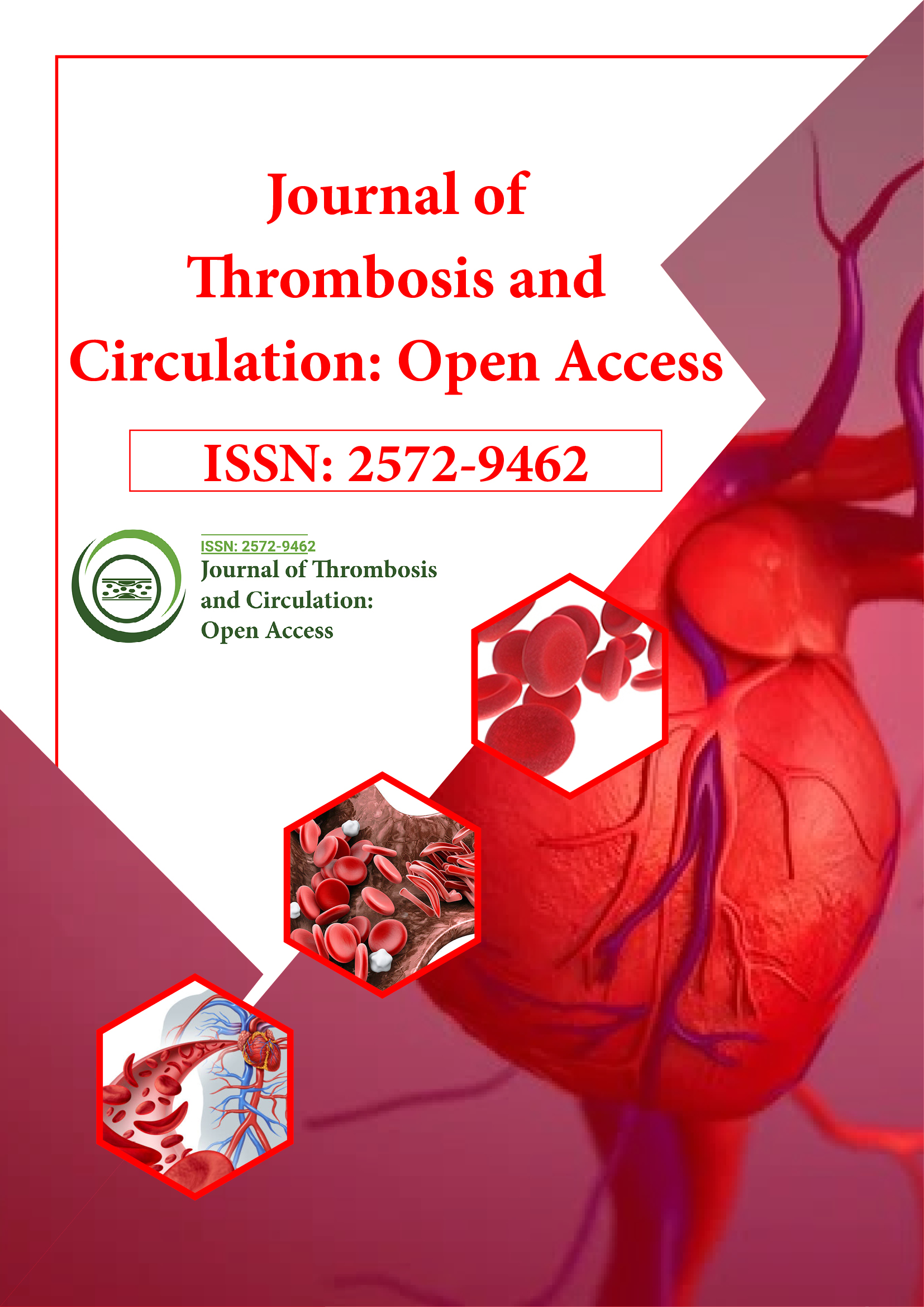Indexed In
- RefSeek
- Hamdard University
- EBSCO A-Z
- Publons
- Google Scholar
Useful Links
Share This Page
Journal Flyer

Open Access Journals
- Agri and Aquaculture
- Biochemistry
- Bioinformatics & Systems Biology
- Business & Management
- Chemistry
- Clinical Sciences
- Engineering
- Food & Nutrition
- General Science
- Genetics & Molecular Biology
- Immunology & Microbiology
- Medical Sciences
- Neuroscience & Psychology
- Nursing & Health Care
- Pharmaceutical Sciences
Commentary Article - (2025) Volume 11, Issue 2
Hypercoagulability in Cancer Patients: Mechanisms, Risk Stratification, and Therapeutic Perspectives
Reema Al-Faraj*Received: 30-May-2025, Manuscript No. JTCOA-25-29339; Editor assigned: 02-Jun-2025, Pre QC No. JTCOA-25-29339 (PQ); Reviewed: 16-Jun-2025, QC No. JTCOA-25-29339; Revised: 23-Jun-2025, Manuscript No. JTCOA-25-29339 (R); Published: 30-Jun-2025, DOI: 10.35248/2572-9462.25.11.307
Description
Thromboembolism remains a leading cause of morbidity and mortality in cancer patients, rivaling tumor progression itself in clinical impact. The phenomenon of Cancer-Associated Thrombosis (CAT) represents a complex interplay of tumor biology, host immune response and coagulation system perturbations. Venous thromboembolism (VTE), particularly deep vein thrombosis and pulmonary embolism, is the most common manifestation, though arterial events also occur with significant frequency. Understanding the pathophysiologic mechanisms, identifying at-risk individuals and optimizing therapeutic strategies are central to improving outcomes in this vulnerable population.
Cancer induces a prothrombotic state through multiple pathways. Tumor cells directly activate coagulation by expressing Tissue Factor (TF) and releasing procoagulant microparticles. These elements initiate the extrinsic coagulation cascade, generating thrombin and facilitating fibrin clot formation. Simultaneously, cancer-associated inflammation elevates cytokine levels, such as IL-6 and TNF-alpha, which stimulate hepatic production of clotting factors and suppress natural anticoagulant mechanisms. Endothelial activation and damage, resulting from both tumor invasion and chemotherapy, further compound the hypercoagulable milieu.
Beyond systemic changes, tumor location and histology influence thrombotic risk. Pancreatic, gastric, lung and brain cancers are especially thrombogenic. Mucin-producing adenocarcinomas are notable for promoting platelet aggregation and fibrin deposition via selectin-mediated pathways. In hematologic malignancies, leukemic cell burden and therapy-related endothelial toxicity contribute to clot formation. Additionally, treatment modalities such as surgery, central venous catheters and antiangiogenic agents like bevacizumab and thalidomide have been implicated in elevating thrombotic risk.
Risk stratification tools have evolved to assist in identifying high-risk cancer patients for VTE prophylaxis. The Khorana score, based on tumor type, platelet count, hemoglobin, leukocyte count and BMI, remains widely used. However, its sensitivity and specificity vary across populations, prompting the development of modified and expanded scoring systems incorporating biomarkers such as D-dimer and P-selectin. Advances in artificial intelligence and machine learning may further enhance predictive accuracy by analyzing large datasets and identifying hidden patterns.
Management of CAT necessitates a delicate balance between thrombosis prevention and bleeding risk. Low Molecular Weight Heparin (LMWH) has long been the standard of care, owing to its efficacy and safety profile demonstrated in the CLOT trial. However, recent studies, including the HOKUSAI-VTE Cancer and SELECT-D trials, have validated the use of Direct Oral Anticoagulants (DOACs), such as edoxaban and rivaroxaban, in cancer patients. These agents offer convenience and comparable efficacy but are associated with a higher risk of gastrointestinal bleeding, particularly in patients with GI tract malignancies. Individualized treatment decisions must consider tumor site, bleeding risk, renal function, patient preference and drug-drug interactions. Anticoagulation duration typically extends for at least 3 to 6 months but may be continued indefinitely in the presence of active cancer or ongoing chemotherapy. Notably, the need for dose adjustments and careful monitoring underscores the importance of specialist involvement and multidisciplinary collaboration. In certain clinical scenarios, prophylactic anticoagulation is recommended even in the absence of overt thrombosis. Hospitalized cancer patients, postoperative individuals and those receiving highly thrombogenic therapies may benefit from preventive LMWH or DOAC administration. Outpatient prophylaxis, although more controversial, is increasingly considered in ambulatory patients with high-risk tumors or elevated Khorana scores. However, routine use remains limited due to concerns about bleeding and cost-effectiveness.
Novel strategies are under development to target the unique mechanisms of CAT. These include inhibitors of tissue factor, selectins and inflammatory pathways. Monoclonal antibodies, small molecules and RNA-based therapies are being explored in preclinical models with promising results. Additionally, approaches that restore endothelial function and modulate platelet activity without systemic anticoagulation may offer safer alternatives in the future.
The burden of CAT extends beyond clinical outcomes. It affects quality of life, disrupts cancer treatment schedules and imposes economic strain. Patient education, early recognition of symptoms and prompt intervention are crucial components of comprehensive care. Integrating thrombosis management into oncology practice will enhance survival and quality outcomes, particularly as cancer becomes a more chronic disease with longer life expectancy.
In summary, cancer-associated thrombosis exemplifies the intersection of malignancy and hemostatic dysregulation. Advances in understanding its pathophysiology and risk stratification have improved prevention and treatment strategies, yet challenges remain in balancing efficacy and safety. Continued research and individualized care approaches are essential to mitigate the thrombotic burden in oncology and enhance the lives of those living with cancer.
Citation: Faraj RA (2025). Hypercoagulability in Cancer Patients: Mechanisms, Risk Stratification, and Therapeutic Perspectives. J Thrombo Cir. 10:307.
Copyright: © 2025 Faraj RA. This is an open-access article distributed under the terms of the Creative Commons Attribution License, which permits unrestricted use, distribution, and reproduction in any medium, provided the original author and source are credited.
